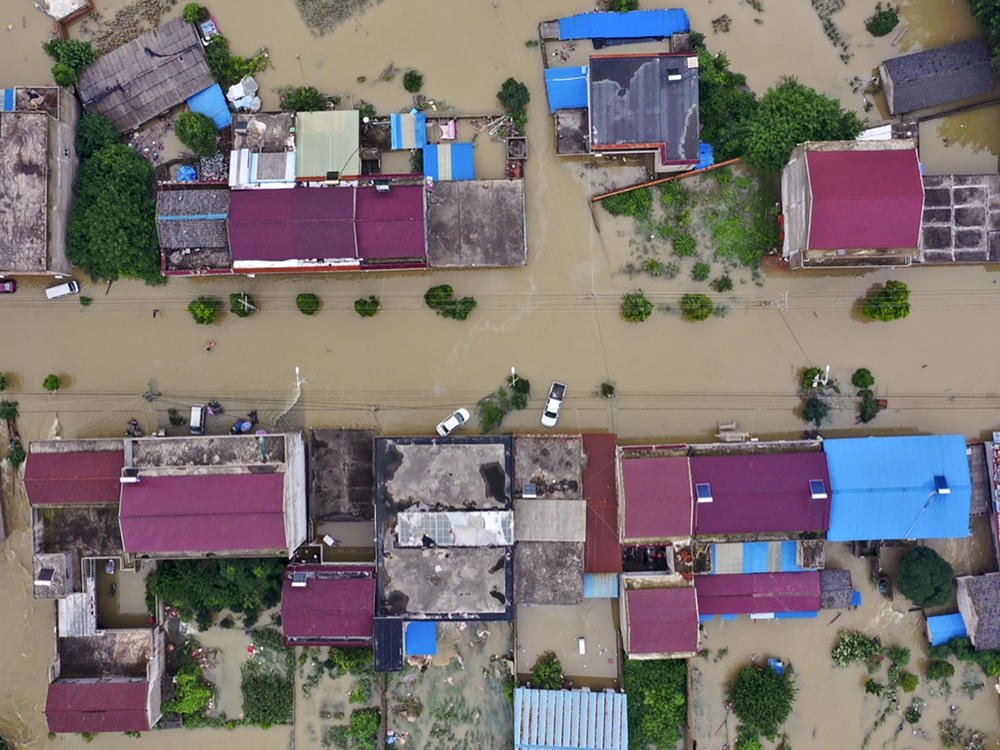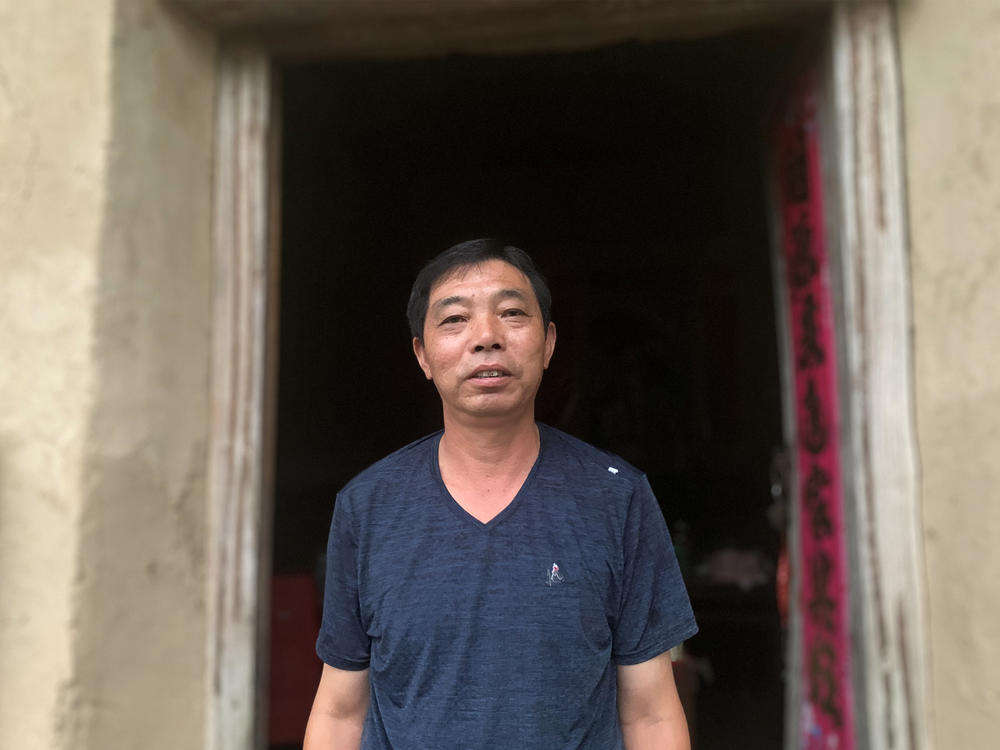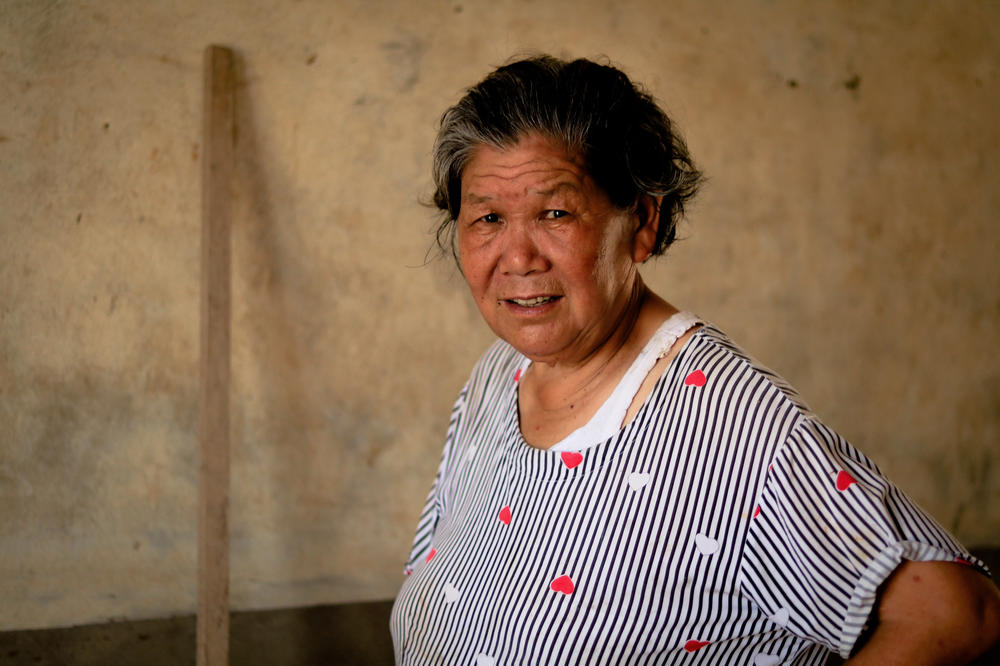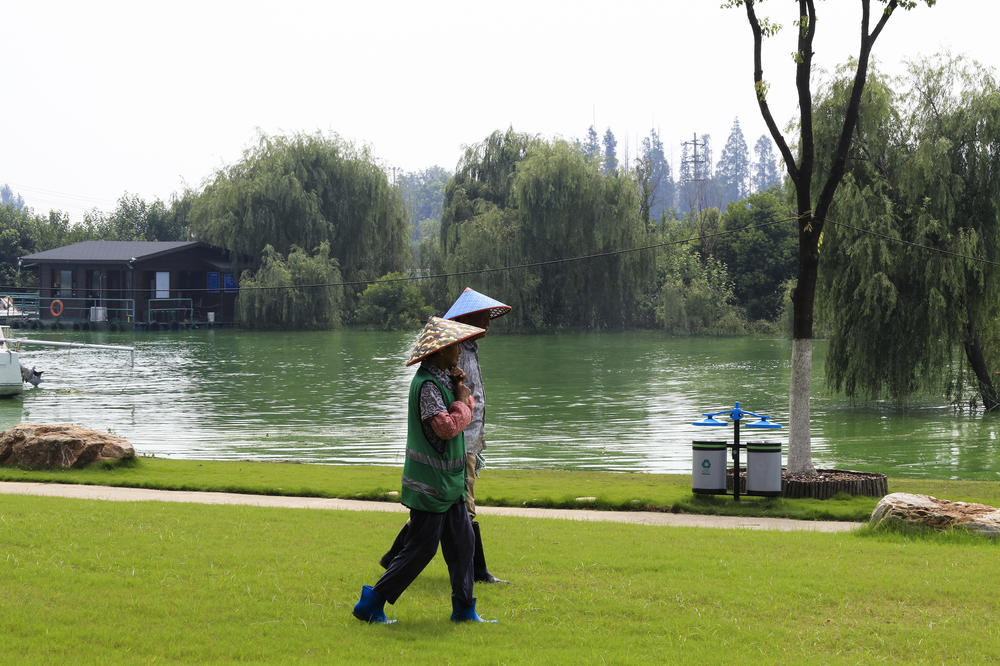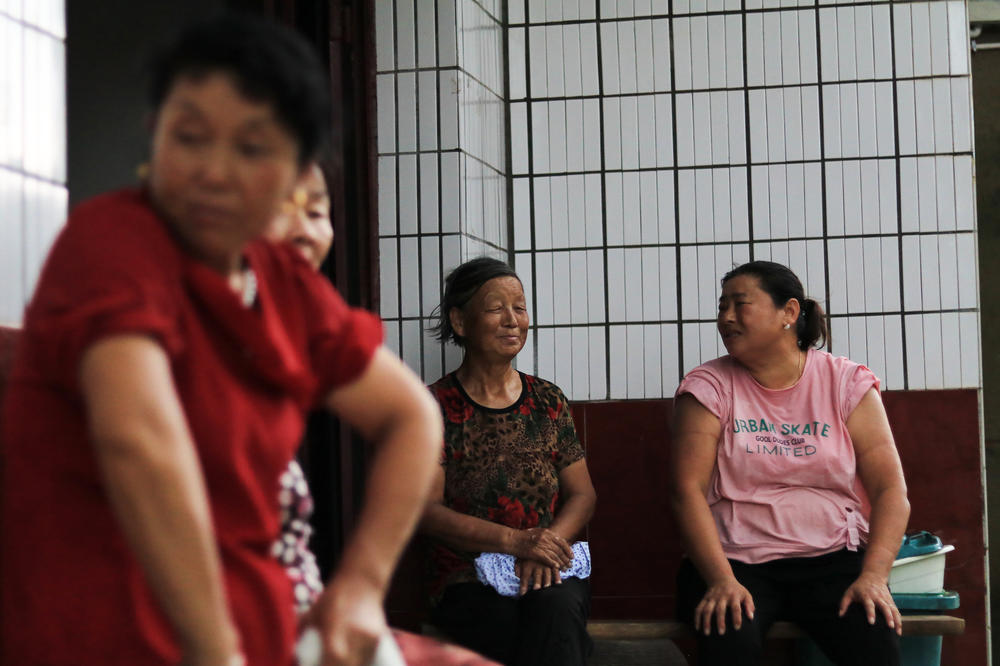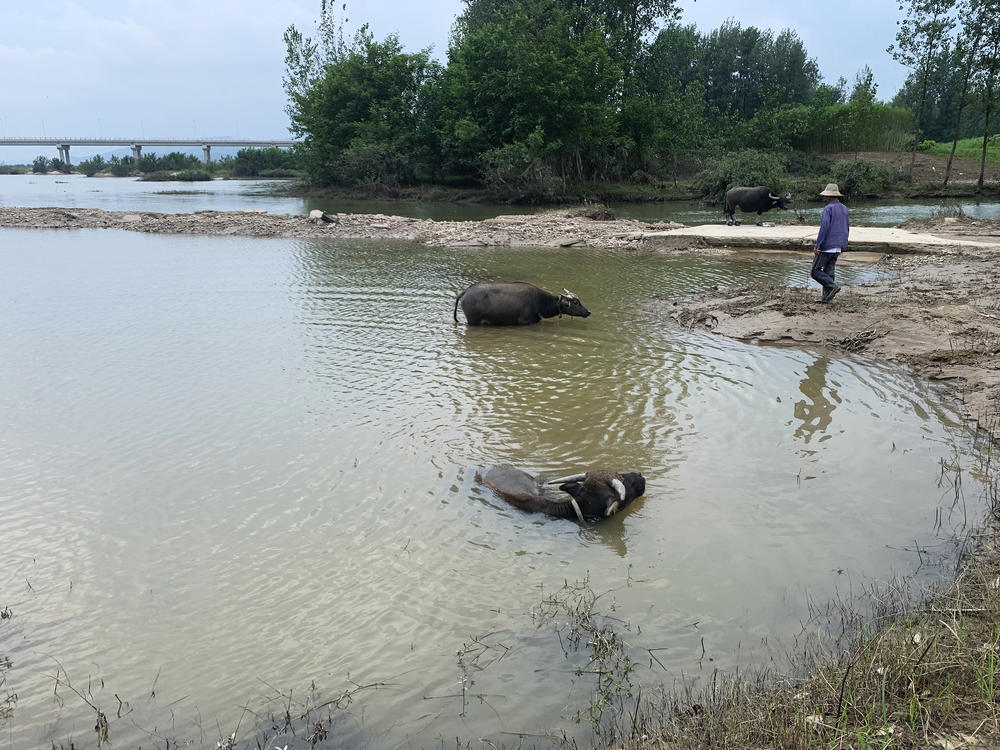Section Branding
Header Content
Roads Become Rivers: Nearly 4 Million Chinese Evacuated Or Displaced From Flooding
Primary Content
First China was hit by the novel coronavirus. Now it is dealing with the worst flooding in more than 20 years across vast swaths, from its southwestern interior to its east coast.
Zeng Hailin is one of an estimated 3.7 million people displaced or evacuated because of floods in China largely since June.
He lost his job in a uniform factory in Zhejiang province because of the coronavirus pandemic, so he returned to his hometown a few hours away, in Anhui province. His troubles didn't end there. In July, weeks of torrential rain led the small river near his house to overflow.
One night, he woke up in a panic.
"The water was suddenly up to my chest," he remembers. "I could not lift my mother out of bed. I could barely walk because the ground turned to slippery mud."
Zeng eventually put his bedridden 81-year-old mother in a large plastic wash basin to float her to a rescue boat.
He now lives in a classroom in the local public school while waiting for new housing. His mother is staying with other relatives.
The Ministry of Emergency Management estimates that nearly 55 million people from 27 provinces have suffered from record-setting floods. More than 40,000 houses collapsed; at least 158 people are dead or missing.
The country's Water Resources Ministry says at the worst point in mid-July, 433 rivers rose to dangerous levels. Some broke through dams or overflowed their banks, flooding nearby villages like Hekou in Anhui province.
"The road in front of our house became a river. We were stuck in our house for days with only some bread, water and instant noodles," said Tang Anfeng, a resident of Hekou village just outside the city of Hefei.
Like almost all the others in her village, Tang's home is now surrounded by submerged fields and damp furniture, a layer of scummy water covering her lost vegetable harvests.
She points to a dark swath of mildew growing on her wall that nearly reaches the ceiling — a reminder of how high the water rose on three separate occasions in July.
Tang, in her 60s, says this part of Anhui has seasonal flooding every year, but only in the last decade has the water risen above her ankles. "Whenever it rains too much, they release the water from the dams. But the water floods our village and we suffer," she says.
In 1958, authorities began building the first of nine dams and diversion barriers near Hekou to regulate seasonal flooding by collecting runoff into reservoirs. Today, the dams provide hydropower and drinking water to nearby cities as well. But during extreme rains, authorities are forced to suddenly release the water.
"There's a decision of basically not how much the rivers will flood, but where the rivers will flood," says Brian Eyler, who studies China's river management at the Stimson Center, a think tank.
China as well as other countries with significant waterways, including the United States, will face greater flood risks and engineers will increasingly have to make a calculus about where to release water or risk a dam collapse.
"Climate change predictions all around suggest that storms are going to be more intense into the coming years," says Eyler. "We are living in places where the rivers have been engineered to allow us to live there. But the engineering is not able to cope with nature, and so nature is getting the best of us."
Heavier seasonal rain is also causing a rethink of water management policies in China's water-adjacent cities, some of which also flooded this summer because of record rainfall. Experts like Yu Kongjian, a prominent landscape architect and professor at Peking University, say an overreliance on "gray infrastructure," or nonabsorbent materials like concrete and man-made systems like sewage pipes, to rapidly urbanize fails to be resilient when confronted with floods.
In 2014, the Ministry of Housing and Urban-Rural Development released national guidance for cities to maximize natural drainage techniques, including constructing rooftop gardens and using permeable building materials — a project nicknamed building "sponge cities." The country wants to bring 20% of land in 658 cities up to "sponge city" drainage standards by the end of this year, at an estimated annual cost of 400 billion yuan ($57.5 billion).
"The whole idea of 'sponge city' is to retain water, clean water, and recharge the aquifers. It's about using nature to regulate water and treat stormwater as resources instead of dumping it into the ocean," Yu said. "It's not just a way to deal with floods, but a holistic idea of how to create an ecological infrastructure so that water will be the main factor."
The initiative is still in its early stages. Nineteen of the 30 pilot sponge cities still reported overwhelmed sewers and canals in 2017. "People who don't work in urban planning or hydrology may have the wrong perception of the sponge city project. They may think sponge cities are a Superman [solution] that could deal with everything," says Faith Chan, an urban planning expert.
Still, Yu remains an optimist. "It will take time, but 'sponge city' is the main way that any levels of government [in China] should try as an alternative to the gray infrastructure."
Heavier rainfall means a precarious existence for the 450 million Chinese residents who live along the mighty Yangtze River or its many tributaries.
Those living downstream in Anhui, mostly in sparse, rural communities, know this hard truth: "If the dams don't release water and flood us, even more people will be doomed," explains Li Huanian, a resident of Hekou village.
Farmer Ma Youxi recounts the sudden flood in July that enveloped his home in Hekou village as he takes his water buffaloes out for a swim. "We only know when the dams release water when the water enters our homes. There is no heads up," he complains.
Ma barely rescued his sheep. He points to his herd of water buffalo — luckily, they float naturally.
Amy Cheng contributed research from Anhui.
Copyright 2020 NPR. To see more, visit https://www.npr.org.
Bottom Content

